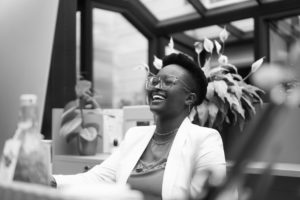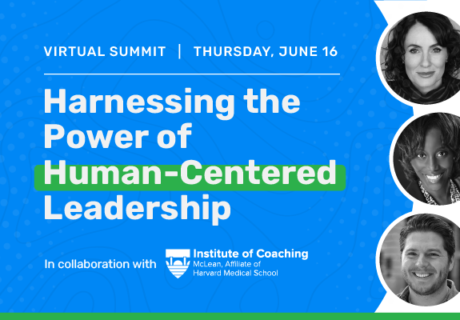When it comes to gender equity, women in leadership still have a long way to go.

According to the United Nations (U.N.), “Globally women make only .77 for every dollar men earn.” What’s more concerning is that the events of the last two years stalled decades of progress for women around the world, while increasing feelings of burnout, exhaustion, and uncertainty. At the current rates, the U.N. predicts it will take 70 years to close the gender pay gap.
DOWNLOAD: Building Human-Centered Leaders in the New World of Work
This post was originally shared on September 21, also known as Black Women’s Equal Pay Day. It’s the day of the year where Black Women finally earn the same amount as men. Simply put: it takes the typical Black woman 19 months to be paid what the average white man takes home in 12 months.
Representation matters.
The gender pay gap is an issue that’s been scrutinized for years, without a clear end in sight. And while there is no one solution to bridging this gap, there is hope. By encouraging women (in particular women of color) to seek out more senior roles, we can help other women see what’s possible. Allowing them the space to see opportunities outside of traditional informal work and step into their power. Increasing representation at this level is akin to the feeling when a little girl sees their favorite singing mermaid on screen and realizes, “She’s brown like me.”
It’s the catapult towards chasing your dreams and normalizing what’s possible.
What’s good for gender equity, is even better for business.
Organizations with a renewed focus on diversity and inclusion initiatives outperform the least gender-diverse companies by 48%, according to McKinsey’s Diversity Wins report.
This is why we are so honored to partner with Paradigm for Parity, a coalition of business leaders dedicated to closing the leadership gender gap in corporate America. Sandra Quince, the CEO of Paradigm for Parity, joins the coalition through Bank of America’s Leader on Loan program ⎯ an effort to help bridge resource and leadership disparity at nonprofits nationwide.
The coalition is made up of c-suite leaders, board members, and business academics who are committed to progressing the norm in the corporate world ⎯ one in which women and men have equal power, status, and opportunity. Paradigm for Parity’s leadership-development program with AceUp supports its member companies with their commitment to increase the number of women in senior operating roles. It’s a critical component of their Paradigm for Parity® 5-Point Action Plan which they’ve determined, “. . . will catalyze change and enable companies to more effectively increase the number of women of all races, cultures and backgrounds in leadership positions.”
Keep reading our Q&A as Sandra discusses how Paradigm for Parity’s new program with AceUp helps pinpoint women+ leaders’ strengths and leverage them to reach their full potential.
Q: How does the Paradigm for Parity pilot program work?
A: The six-month pilot program leveraged a multi-pronged approach to offer a comprehensive learning experience for multicultural women. It had several key components which includes key business and financial acumen through a simulated three-year business strategy; sponsorship from internal company executives one or two levels up; external navigators/mentors who have managed significant P&Ls; soft skill leadership training specific to women leaders; and a virtual executive coach which was integrated into the program mid-point and ran beyond the capstone to allow participants to receive one-on-one and group coaching to put into action all that they learned beyond their time in the program.
WATCH: Sandra and other HR leaders discuss the importance of vulnerability.
Q: What is the significance to having two parts to the program starting at different times?
A: The timing was important because it provided the participants the opportunity to gain new technical skills during the business simulation and enhance leadership skills through the soft skill training for the first three months of the program prior to introducing the virtual one-on-one and group coaching. It also allowed them to continue the coaching relationship three months beyond the official training to maximize the impact of what they learned during the P&L program.
Q: How were the participants able to learn soft skills?
A: Participants attended “power skill” Master Class Series with Diversity Woman Media. These sessions were essential to their professional toolkit and created a group dynamic that provided a safe and honest space for participants to express themselves authentically on the challenges and rewards of being a diverse woman leader. They also attended a session designed specifically for the participants by Emory University’s Goizueta Business School which focused on career management skills and how to apply those skills to their professional roles.
Q: Are the participants able to use these resources after they complete the program?
A: Yes, all of the presentations were provided to the participants. We also encouraged them to continue to connect with their internal sponsor, executive coaches and external mentors. As you can imagine, these women have formed a bond and network that we hope will last well past the program and they will continue to connect with each other and our future programs.
The program was such a success, and we are in the process of leveraging all the feedback we’ve received from program participants and partners to launch our next cohort which will be available for our entire P4P coalition. We will open nominations for the 2023 cohort in September.
Coming soon…
Stay tuned for Part II of our Gender Equity Series where Sandra will share how coaching helped her mitigate her own unconscious bias and truly own her leadership prowess.


